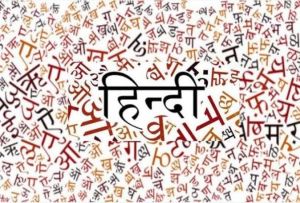Difference between revisions of "Language/Hindi/Grammar/Gender"
| Line 3: | Line 3: | ||
There are two main kinds of gender in Hindi: masculine and feminine. | |||
The “masculine” gender of nouns in the Hindi language is known as '''पुल्लिंग''' (''puLLing''), whereas the “feminine” gender in Hindi is known as '''स्त्रीलिंग''' (''STriiLing''). | The “masculine” gender of nouns in the Hindi language is known as '''पुल्लिंग''' (''puLLing''), whereas the “feminine” gender in Hindi is known as '''स्त्रीलिंग''' (''STriiLing''). | ||
Unlike in English and other languages, there’s no neuter, or common, gender in Hindi | Unlike in English and other languages, there’s no neuter, or common, gender in Hindi | ||
| Line 36: | Line 37: | ||
* दो '''आदमी''' पेड़ के नीचे बैठे हैं. ''Do aaDmii per ke Niice baithe hain'' “Two men are sitting under the tree.” | * दो '''आदमी''' पेड़ के नीचे बैठे हैं. ''Do aaDmii per ke Niice baithe hain'' “Two men are sitting under the tree.” | ||
* दो '''औरतें''' पेड़ के नीचे बैठी हैं. ''Do auraTen per ke Niice baithii hain'' “Two women are sitting under the tree.” | * दो '''औरतें''' पेड़ के नीचे बैठी हैं. ''Do auraTen per ke Niice baithii hain'' “Two women are sitting under the tree.” | ||
| Line 50: | Line 46: | ||
!English | !English | ||
!Hindi | !Hindi | ||
! | ! | ||
|- | |- | ||
| Line 56: | Line 51: | ||
|vah bazar ja <u>'''rahi'''</u> hai. | |vah bazar ja <u>'''rahi'''</u> hai. | ||
|female | |female | ||
|- | |- | ||
|He is going to market. | |He is going to market. | ||
|vah bazar ja <u>'''raha'''</u> hai. | |vah bazar ja <u>'''raha'''</u> hai. | ||
|male | |male | ||
|} | |} | ||
Revision as of 16:04, 8 August 2022
There are two main kinds of gender in Hindi: masculine and feminine.
The “masculine” gender of nouns in the Hindi language is known as पुल्लिंग (puLLing), whereas the “feminine” gender in Hindi is known as स्त्रीलिंग (STriiLing).
Unlike in English and other languages, there’s no neuter, or common, gender in Hindi
Vaguely, the characteristic of masculine words in Hindi is that they mostly end with an –a sound, as in कमल (kamaL).
If we break it down:
- कमल = क् + अ + म् + अ + ल् + अ “Lotus”
Similar words include मोर (mor) meaning “peacock” and बादल (baaDaL) meaning “clouds.”
So, basically, any word that usually ends with an -a sound is masculine. But it would be unfair to say that this is the only case. Exceptions prevail in every language, and we’ll be dealing with them later.
For beginners, jumping directly to the masculine-to-feminine conversion may be a bit confusing. So why don’t we warm up a bit with some simple examples?
Example sentences for singular nouns:
- एक आदमी पेड़ के नीचे बैठा है. ek aaDmii per ke Niice baithaa hai “A man is sitting under the tree.”
- एक औरत पेड़ के नीचे बैठी है. ek auraT per ke Niice baithii hai “A woman is sitting under the tree.”
As you can see, we’ve replaced the masculine noun with a feminine one. We can do the same with plural nouns as shown in the example sentences below.
Example sentences for plural nouns:
- दो आदमी पेड़ के नीचे बैठे हैं. Do aaDmii per ke Niice baithe hain “Two men are sitting under the tree.”
- दो औरतें पेड़ के नीचे बैठी हैं. Do auraTen per ke Niice baithii hain “Two women are sitting under the tree.”
How to represent gender while talking in Hindi
In Hindi when we represent a girl or female, we talk like:
| English | Hindi | |
|---|---|---|
| she is going to market. | vah bazar ja rahi hai. | female |
| He is going to market. | vah bazar ja raha hai. | male |
In English there is two different words for representing female and male she and he.
But in Hindi there is only one word for representing male and female but using of raha hai (represents male) and rahi hai (represents female).
regards,
Hienjoy
